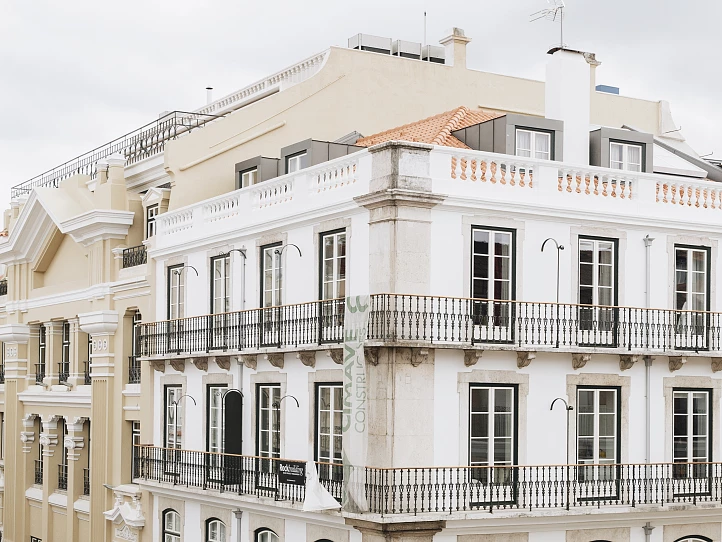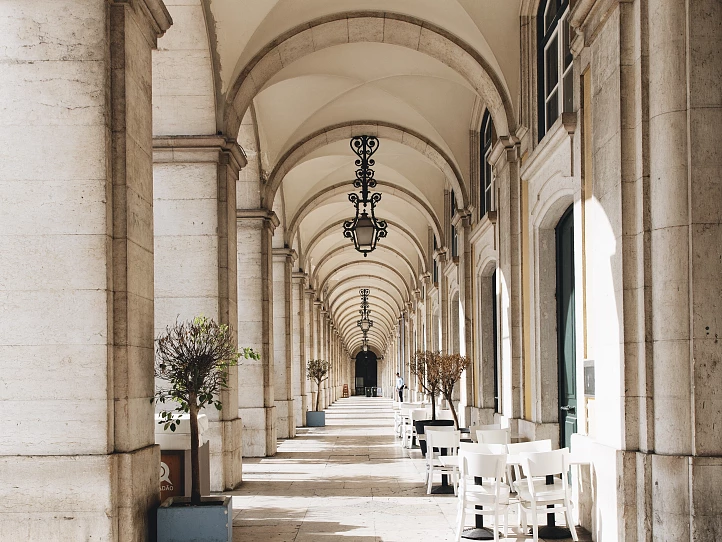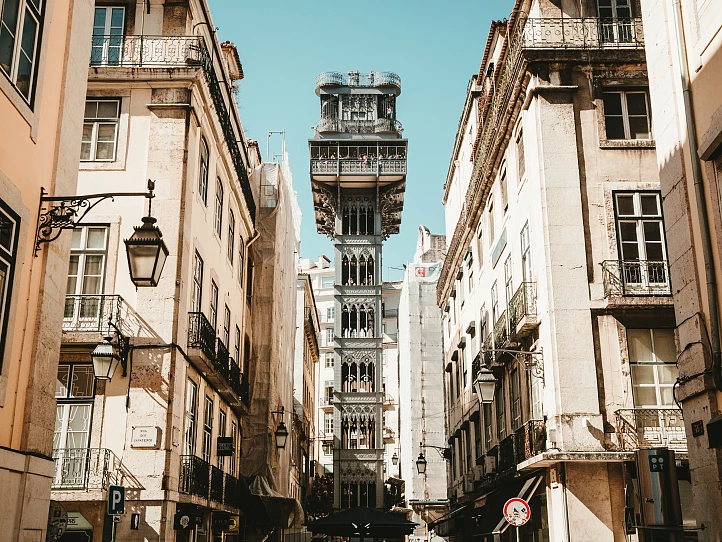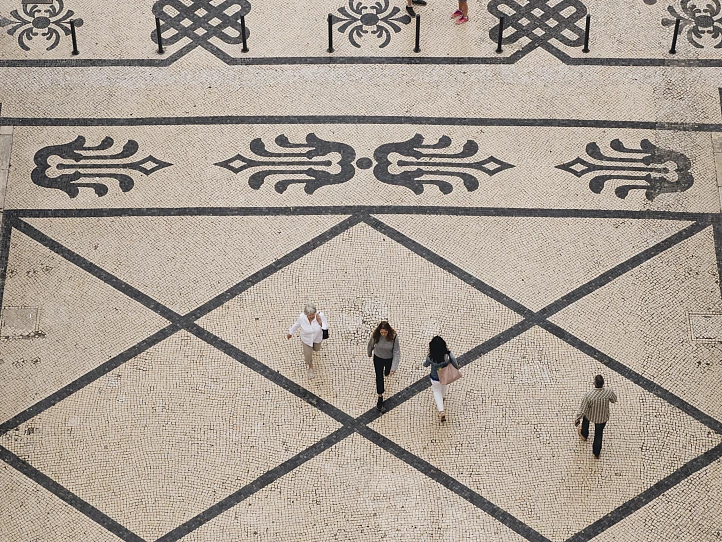
SOBRE A LOCALIZAÇÃO
A Baixa é o coração de Lisboa, constituída por uma malha de ruas repletas de lojas, cafés e boutiques, culminando na ampla Praça do Comércio, junto ao rio.
É um centro comercial vibrante, com calçada portuguesa nos passeios pedonais e onde se encontram lojas modernas, boutiques exclusivas e magníficos imóveis para venda. A Rua Augusta, uma das principais atrações da Baixa, é para Lisboa o que o Covent Garden é para Londres.
Pode considerar a Baixa como o ponto central onde converge todo o centro histórico, ligando o Chiado, a Alfama e a Avenida da Liberdade ao rio Tejo.


POTENCIAL DE INVESTIMENTO
Uma das vantagens de adquirir um apartamento na Baixa é ter acesso a todas as comodidades à porta, seja para investidores ou para quem pretende mudar-se para Lisboa.
Atualmente, a maioria dos edifícios da Baixa alberga bancos e escritórios, tendo-se recentemente transformado numa zona comercial e turística vibrante. Embora o arrendamento de curta duração seja fortemente restringido neste bairro, os imóveis na Baixa podem ser arrendados a longo prazo, com uma rentabilidade anual estimada de 3,7%.
A Baixa é o bairro onde tem tudo ao seu dispor enquanto vive uma autêntica experiência lisboeta, desde os restaurantes tradicionais portugueses à porta até ao magnífico passeio ribeirinho junto ao Rio Tejo.
OPINIÃO DOS ESPECIALISTAS

A Baixa é um mercado excelente para investimentos em alojamento local e está em processo de candidatura a Património Mundial da UNESCO, o que certamente contribuirá para uma maior valorização da região.
RAZÕES PARA COMPRAR
- Arquitetura histórica
- Excelente para rendimento de arrendamento
- Ambiente animado e vida de rua vibrante
- A poucos minutos a pé do rio Tejo
- Bairro emblemático
O QUE DEVE SABER
- Mercado forte para investimentos em alojamento local
- Rua Augusta pedonal
- Elevador de Santa Justa construído em 1902 por um discípulo de Eiffel
- Praça do Comércio: a praça mais antiga de Lisboa
- Fachadas Art Deco com azulejos, restaurantes com esplanadas e artistas de rua
DESENVOLVIMENTO DE INFRAESTRUTURAS
A Baixa foi construída originalmente no século XVIII, após o terramoto de 1755 que devastou grande parte da cidade. A reconstrução foi projetada pelo arquiteto Eugénio dos Santos, que concebeu um plano urbanístico em grelha, com amplas avenidas e imponentes praças públicas.
Este projeto urbanístico, conhecido como "Baixa Pombalina", contribuiu para a modernização de Lisboa e tornou-se uma referência para outras cidades europeias. O bairro transformou-se num importante polo comercial, com inúmeras lojas e estabelecimentos comerciais a instalarem-se ao longo da artéria principal, a Rua Augusta.
Atualmente, a Baixa é um dos destinos turísticos mais procurados da cidade, reconhecida pela sua arquitetura histórica, ambiente cosmopolita e dinâmica vida urbana.


HISTÓRIA
A palavra "Baixa" significa literalmente "baixo" em português. É um nome adequado para este bairro, pois é a única zona de Lisboa completamente plana. Foi reconstruída após o devastador terramoto de 1755 e, ao contrário da maior parte de Lisboa, a Baixa está organizada numa malha ortogonal, interligada por várias praças onde majestosos edifícios neoclássicos testemunham uma época de prosperidade e poder.
Ainda hoje, a Baixa mantém-se como a zona comercial mais movimentada de Lisboa, sem perder a sua ligação à herança histórica da Lisboa antiga. Ao passear pelas suas encantadoras ruas, ainda encontrará as mesmas famílias dedicadas aos ofícios artesanais, um conhecimento transmitido de geração em geração. Para quem dedica tempo a explorar a Baixa, é possível descobrir pequenos recantos mágicos que parecem estar a léguas da agitação turística.
A ZONA ATUALMENTE
Começando junto ao rio, faça um passeio pela Praça do Comércio, uma praça ampla onde decorrem várias celebrações. A norte da praça, encontra a Rua Augusta, uma artéria pedonal repleta de esplanadas, montras Art Déco em azulejo, restaurantes em terraço e artistas de rua, destacando-se o imponente Arco da Rua Augusta (que pode ser visitado até ao topo!).
Na Baixa, cada rua tem o seu encanto próprio: a Rua das Portas de Santo Antão é uma zona pedonal movimentada, famosa pelos seus restaurantes de marisco. Nas proximidades, na Rua de Santa Justa, encontra-se o Elevador de Santa Justa, construído em 1902 por um discípulo de Eiffel. Este elevador de 32 metros oferece uma vista deslumbrante sobre a cidade e acesso direto ao Bairro Alto.
O Rossio, no extremo norte da Baixa, é a praça mais antiga de Lisboa e continua a ser um local agradável para passear - não se esqueça de provar um cálice de Ginja, o tradicional licor de cereja, no bar A Ginjinha.

INSIGHTS ATHENA

GUIAS DE COMPRA DE IMÓVEIS
SAIBA MAIS
SAÚDE E BEM-ESTAR
SAIBA MAIS
PARA PROPRIETÁRIOS
SAIBA MAIS
FINANÇAS E MERCADO
SAIBA MAIS
RESIDENCIAL
SAIBA MAISLOCALIZAÇÃO
A apenas 20 minutos de carro do Aeroporto de Lisboa, a Baixa é o centro histórico da cidade, com excelentes acessos e ligações


 OBTER DIREÇÕES
OBTER DIREÇÕES
